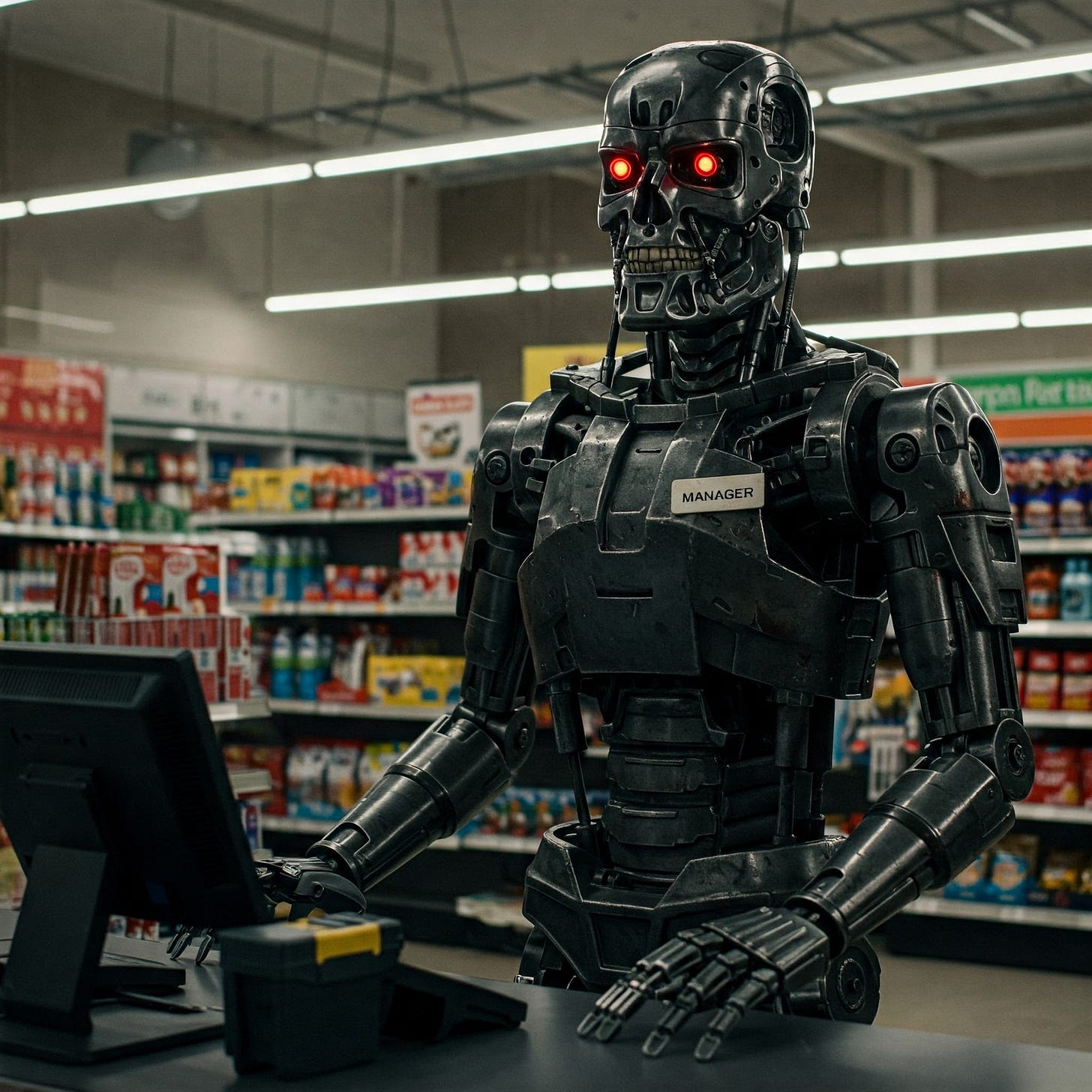The Terminator of Retail: How Alibaba’s AI-Generated E-Commerce Could End Us All
I don’t fear the sci-fi abstractions of rogue robots or time-traveling assassins. My nightmares aren’t populated by Terminators with glowing red eyes. No, what keeps me awake at night is something far more mundane and far more real: the relentless march of Alibaba and Amazon, two corporate behemoths quietly reshaping the world under the guise of “innovation.” Their latest weapon? A system called “Sell It Before You Make It,” detailed in a chilling research paper from Shanghai Jiao Tong University and Alibaba Group (arXiv:2503.22182v1, March 28, 2025). It’s a vision of e-commerce powered by AI-generated items (AIGI) that promises efficiency, personalization, and profit while threatening to hollow out humanity’s creative soul and turn us all into cogs in a dystopian machine. Most people don’t see it yet, but I do, and it’s worse than any sci-fi horror I’ve ever imagined.
The Promise: A Shiny New World of Efficiency
The paper, authored by Jianghao Lin and a team from Alibaba and academia, introduces a system deployed at Alibaba that uses cutting-edge text-to-image diffusion models to revolutionize e-commerce. The concept is deceptively simple: merchants input textual descriptions like “T-shirt, Sweet Style, Pink Color” and the AI spits out photorealistic images of products that don’t yet exist. These AI-generated items are marketed and sold before they’re manufactured, with production only kicking in once enough orders roll in. The result? No physical prototypes, no wasted inventory, and a lightning-fast time-to-market. The researchers boast a 13% boost in click-through and conversion rates compared to human-designed products. It’s a merchant’s dream and a consumer’s bait.
On the surface, it’s brilliant. Traditional e-commerce, as the authors note, is bogged down by inefficiency: designing, manufacturing, and photographing products before knowing if they’ll sell. AIGI flips that script, letting merchants test the waters with virtual goods. The paper’s diagrams contrast the clunky old process with this sleek, AI-driven workflow. It’s personalization on steroids, with the “PerFusion” framework tailoring images to “group-level comparative preferences” across users. The system learns what you like, what groups like, and churns out endless variations until something sticks. Alibaba’s already rolled it out, and you can bet Amazon’s watching closely.
The Reality: A Dystopia of Control and Conformity
But peel back the glossy veneer, and this isn’t progress, it's a trap. The “Sell It Before You Make It” model isn’t just about efficiency; it’s about control. Alibaba and Amazon already dominate global commerce, their algorithms dictating what we see, buy, and desire. Now, they’re cutting humans out of the creative process entirely. Designers? Obsolete. Photographers? Redundant. The AI doesn’t just streamline, it replaces. And when production only happens after orders are secured, the risk shifts from corporations to consumers. We’re the guinea pigs, pre-paying for goods that might never match the shiny AI renders we clicked on.
Worse, this system thrives on homogenization. The PerFusion framework, with its “personalized adaptive network” and “group-level preference optimization,” sounds empowering until you realize it’s training AI to predict and manipulate our tastes. The paper admits the challenge lies in “capturing users’ group-level personalized preferences” across diverse candidates. Translation: they’re not just selling us products; they’re engineering our desires, flattening individuality into algorithm-friendly patterns. That “13% improvement” in clicks and conversions? It’s not a win for consumers, it's proof the machine knows us better than we know ourselves.
The Future: A World Without Soul
Imagine a future where every t-shirt, every dress, every gadget starts as an AI hallucination. No artisan sketching in a studio, no factory worker tweaking a prototype, just a cold diffusion model spitting out infinite permutations of “Sweet Style, Pink Color.” The paper celebrates this as a “paradigm shift” that “fundamentally alters how supply chains operate.” I call it a death knell for creativity. When merchants can churn out virtual inventory at zero cost, why take risks on bold, human-driven ideas? Why bother with the messy, unpredictable spark of art when AI can optimize for what’s already popular?
And then there’s the economic fallout. Small businesses, already crushed by Alibaba and Amazon’s scale, can’t compete with this. The system favors giants with the resources to deploy AI at scale, widening the gap between corporate overlords and everyone else. Jobs vanish, designers, manufacturers, photographers all sacrificed to the altar of efficiency. The paper’s authors don’t address this; they’re too busy touting their “industrial-scale deployment.” But I see it: a world where human labor is an afterthought, triggered only when the AI says “go.”
The Fear: We’re Sleepwalking Into It
What terrifies me most isn’t the technology itself, it's that no one seems to care. The paper’s abstract reads like a victory lap, and Alibaba’s probably popping champagne over those 13% gains. Meanwhile, we’re sleepwalking into a dystopia where our choices, our culture, and our livelihoods are dictated by algorithms owned by a handful of trillion-dollar titans. This isn’t sci-fi abstraction; it’s happening now, on March 31, 2025, as I write this. Alibaba’s system is live, and Amazon’s surely next. We’re not fighting Terminators with shotguns, we're clicking “Buy Now” and funding our own erasure.
A Call to Wake Up
I’m not saying we should smash the machines. AI can do wonders. But this? This is beyond belief, a corporate power grab dressed up as progress. We need to see it for what it is: a threat to human agency, creativity, and independence. Boycott it. Demand transparency. Support the humans still making things the hard way. Because if we let Alibaba and Amazon turn e-commerce into an AI-generated slot machine, we’re not just losing jobs or art we’re losing ourselves.


